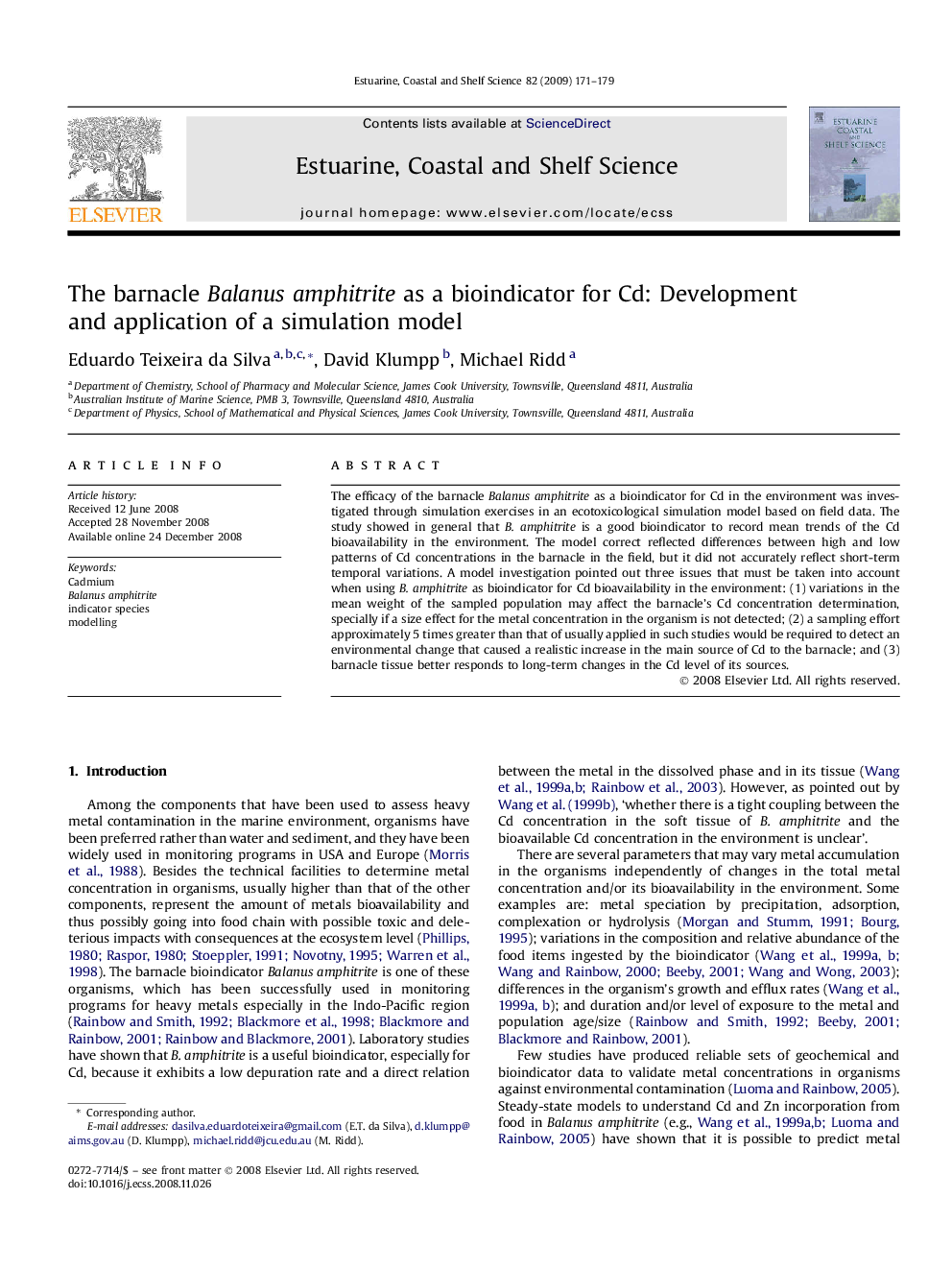| Article ID | Journal | Published Year | Pages | File Type |
|---|---|---|---|---|
| 4541227 | Estuarine, Coastal and Shelf Science | 2009 | 9 Pages |
The efficacy of the barnacle Balanus amphitrite as a bioindicator for Cd in the environment was investigated through simulation exercises in an ecotoxicological simulation model based on field data. The study showed in general that B. amphitrite is a good bioindicator to record mean trends of the Cd bioavailability in the environment. The model correct reflected differences between high and low patterns of Cd concentrations in the barnacle in the field, but it did not accurately reflect short-term temporal variations. A model investigation pointed out three issues that must be taken into account when using B. amphitrite as bioindicator for Cd bioavailability in the environment: (1) variations in the mean weight of the sampled population may affect the barnacle's Cd concentration determination, specially if a size effect for the metal concentration in the organism is not detected; (2) a sampling effort approximately 5 times greater than that of usually applied in such studies would be required to detect an environmental change that caused a realistic increase in the main source of Cd to the barnacle; and (3) barnacle tissue better responds to long-term changes in the Cd level of its sources.
